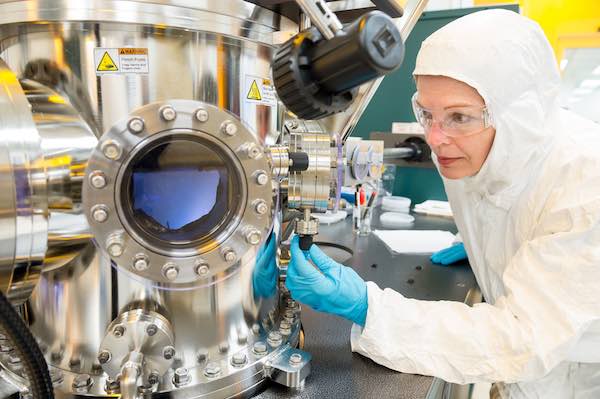
[Image above] Liliana Stan of the Center for Nanoscale Materials at Argonne National Laboratory uses a sputtering system to create thin films of nanomaterials. Credit: Mark Lopez, Argonne National Laboratory; Flickr CC BY-NC-SA 2.0
Yesterday, the U.S. Senate approved a $1.3 trillion spending package that significantly increases—rather than decreases, like previously proposed spending plans—funding for research.
The House of Representatives already approved the plan, so its final step before becoming official is to get approval of the President.
As proposed, the plan provides the largest increases to research spending in nearly a decade and increases R&D funding by 12.8% over 2017 figures—reaching a total of $176.8 billion for R&D spending in 2018.
Here are a few of the highlights for several major science agencies (numbers are for total budgets, not just R&D):
- Department of Defense Science & Tech would see an 6.2% increase over 2017 spending, an additional $865 million, for a total $14.8 billion budget.
- NSF would see a 3.9% increase, an additional $295 million, to reach a total $7.8 billion budget.
- DOE’s Office of Science would see a 16.1% increase, an additional $868 million, to reach a total $6.26 million budget. The White House previously proposed 15% cuts, rather than increases, to this agency’s budget. Plus, the proposed plan does not eliminate the the Advanced Research Projects Agency-Energy.
- NASA science programs would see a 7.9% increase, an additional $457 million, to reach a total $6.2 billion budget. Overall, NASA would get an 5.5% increase, an additional $1.1 billion, for a total $20.7 billion budget.
- NIST would see a 25.9% increase, an additional $247 million, for a total $1.2 billion budget.
- U.S. Geological Survey would see a 5.8% increase, an additional $63 million, for a total $1.1 billion budget.
For more information, see this story over at Science and this in-depth analysis by the American Association for the Advancement of Science.
The next step for this promising spending package is that it will land on President Trump’s desk for signing and approval, or potential veto—which has already been threatened to be the case.
Cross your fingers.
Subscribe to the Ceramic Tech Today newsletter to continue to read more articles about the latest news in the ceramic and glass industry!
Author
April Gocha
CTT Categories
- Basic Science
- Market Insights
Related Posts
‘Fairy circles’ may help mark natural underground hydrogen deposits
September 18, 2025

